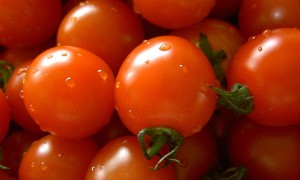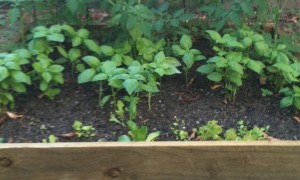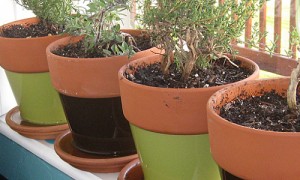As the weather warms, you are no doubt yearning to be outside to get your hands working in the dirt again. If you have never tried gardening, spring is the perfect opportunity to give it a shot and plant your own vegetable garden. Growing your own vegetables is a great way to get some fresh air and exercise, and it also allows you to get the highest possible amount of nutrients from your food. Fresh vegetables are much healthier for you than those bought from the store, as they begin to lose nutritional value the longer they sit on a shelf.
Get your gardening gear out from storage. Here is a round up list of the easiest–and most practical–vegetables to grow in your garden.
1. Tomatoes
If you are new to gardening, tomatoes should absolutely be your first plant to try. Homegrown tomatoes, ripened in the sun, are a delicious addition to any meal. They are high in fiber, iron, magnesium, niacin, potassium, and several vitamins (including A and C). They are also one of the only sources of the beneficial antioxidant lycopene. If you’re just starting out or have limited space, try growing tomatoes in a container on your deck first. Usually, you can get by with just an 18-inch deep container. One plant will yield dozens of tomatoes throughout the season. Just remember that tomatoes like lots of sun and heat, so if you live in a colder area, it may take a little bit longer to get them growing.
2. Beans and Peas
Beans and peas are incredibly easy to grow. Depending on your preferences and your gardening space, you can choose to grow either bush or climbing varieties. Bush beans support themselves, while climbing or “pole” varieties need a stake or trellis to climb up on.
If you’re feeling extra organic, consider planting your beans and peas next to your corn. Beans fix nitrogen in the soil which aids the corn, and also use the stalk as a natural trellis. Both peas and beans are high in fiber, iron, potassium, and a wide range of vitamins. Plus, they continue to produce basket upon basket of delicious vegetables throughout the entire season.
3. Broccoli
Broccoli is a great vegetable to grow as it is one of the most nutritionally dense. It is high in crucial nutrients such as calcium, magnesium, iron, vitamin A, vitamin B6, and vitamin C.
Although broccoli can be grown in containers, it’s just as easy to plant it directly in the ground. It is commonly known as a cold-season crop, so it can withstand a light frost–and actually tastes better after doing so. Meaning, you can plant it when soil temperatures are still a bit chilly in early spring and keep it going long into autumn.
4. Peppers
There are dozens of varieties of peppers you can grow, but most of them are all cultivated in about the same way. Consider bell peppers for your first try at pepper planting. A cool feature of planting bell peppers is that you will have different types of peppers at every growing stage. Harvest them young for crunchy green peppers, or wait a few weeks to allow the sun to further ripen them into delicious red peppers.
Whichever type you choose, peppers are full of nutrients, such as riboflavin and potassium. They can also be planted in pots, but grow best directly in the ground. Like tomatoes, they like lots of heat. Make sure you plant them in a warm, sunny area.
5. Carrots
A word to the wise–if you have rocky or clay soils, consider planting carrots in a raised bed or container. Carrots like fertile, loose soil and need plenty of room to stretch out and extend their roots. Carrots are an icon of healthy eating and are high in vitamins A, B6, and C. Sow carrot seeds about two to three inches apart, and be sure to thin them as they form tops.
6. Leafy Greens
There are dozens of varieties of greens you can plant in your garden. Choose the one that best works for your climate and soil type. Popular varieties that tend to work almost anywhere include spinach and kale. Both are cold-season crops that can be started a bit earlier than other crops, and can be harvested continually throughout the year. As a bonus, once they begin to die back and your harvest dips, you can reseed over the existing plants to produce new, fresh plants. Regardless of the type of greens you plant, these are easy to grow and harvest and contain high amounts of iron, calcium, potassium, and vitamins.
7. Cucumbers
Make room for at least one cucumber plant in your garden this summer. Cucumber plants produce large quantities, all of which spiral out in spiky vines. They can spread up to twenty-five feet away, so make sure you have plenty of room. Whether you plant pickling or slicing cucumbers, you should plant about five seeds in 6-inch high hills, and then thin to the two strongest plants. These warm-season crops love heat, so consider planting them on top of a layer of black plastic to heat up the soil.
8. Zucchini
The last plant on our list is zucchini. Zucchini plants have a reputation for being prolific producers, developing so many fruits at a time. The roots of the plant need regular moisture, but besides that, this is a low-maintenance vegetable that will pump out a bumper crop with just a single plant. You can eat both the fruits and blossoms of these delicious giants. Like cucumbers, they prefer warm, moist soil, so the black plastic sheet method works well in this situation, too.
Growing your own vegetables is a noble task that can take very little time and skill. If you’re ready to start on your path to self-sufficiency, give these tasty plants a try this spring.






